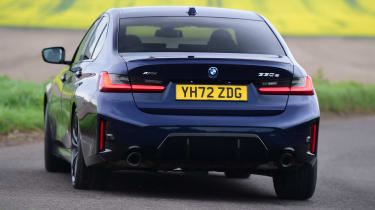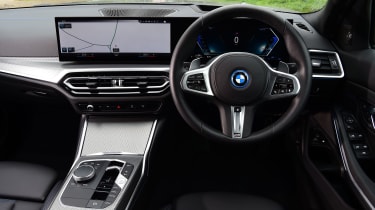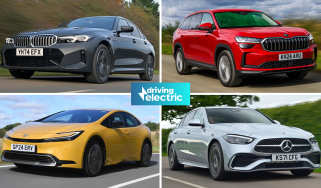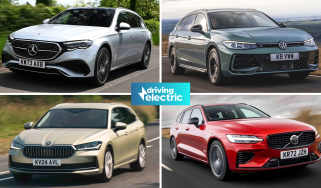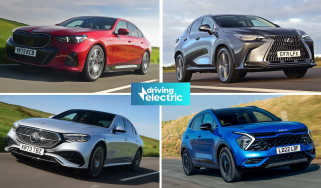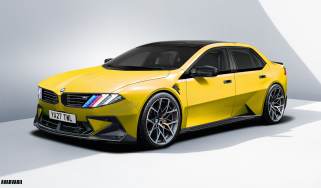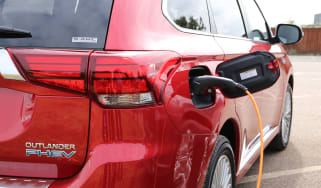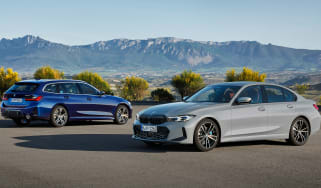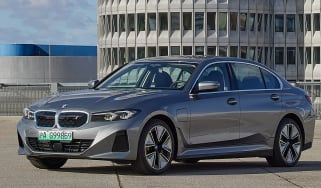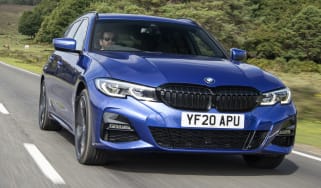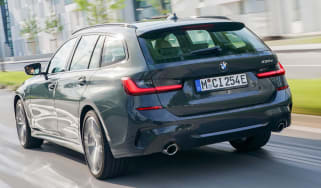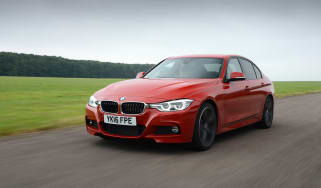BMW 330e hybrid review
The latest BMW 3 Series plug-in hybrid is a very accomplished all-rounder, combining driving enjoyment with ultra-low running costs for an appealing package
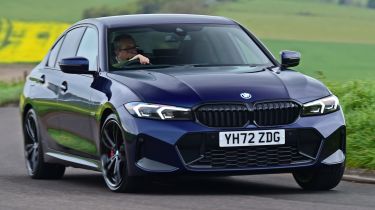
Pros
- Great to drive
- Superb interior
- Low running costs
Cons
- Reduced boot space
- Engine noisy when pushed
- Diesel better for high mileage
|
Model |
Electric range |
Fuel economy |
CO2 emissions |
|
330e |
37-38 miles |
177-217mpg |
30-35g/km |
|
330e xDrive |
34-37 miles |
166-188mpg |
33-39g/km |
The BMW 330e plug-in hybrid promises to be a 'have-your-cake-and-eat-it' sort of car. You get the involving handling and strong performance that has come to typify the 3 Series down the years, along with four-door practicality and ultra-low running costs – particularly if you're running one as a company car.
This is achieved by means of a 2.0-litre turbocharged petrol engine paired with an electric motor and battery. Charge that battery regularly and make full use of the car's circa-35-mile electric range, and you could see average fuel economy north of 200mpg, while the ultra-low official CO2 emissions keep the 330e in the lower bands of the company-car tax table.
As well as all that, there's 288bhp on tap for those times when you'd rather have fun than look after your bank account, plus the option of a practical five-door Touring estate model if you need a bit more versatility and luggage space. What's not to like?
All BMW 3 Series are engaging and enjoyable to drive and the 330e is no exception, especially as it also brings smooth and quiet motorway progress along with an agile and involving driving experience on a twisty road. It's much more entertaining than an Audi Q5, for instance, and has a bit more zing than the plug-in hybrid variants of its direct rivals, the Volvo S60 and Mercedes C-Class.
Most of the time, the 330e sends 249bhp to the rear wheels only (although a four-wheel-drive xDrive variant is available as well). But if you flick the car into Sport mode, you have access to the 'XtraBoost' function, giving a temporary increase in power to 288bhp, which is useful for swift overtaking.
At the other end of the spectrum, you can let the car prioritise smooth and silent electric running. In our experience, you can expect some 30 miles of electric running in real-world driving, which is quite a way behind the 60-odd miles possible in the Mercedes C 300 e and Volvo S60 Recharge. Regardless, the 330e will at least equal (if not better) the fuel economy of its 320d diesel sibling – providing you keep the battery topped up as often as possible.
Practicality-wise, there's some sacrifice to be made in terms of boot space when you choose the 330e. Its 375-litre luggage capacity is 105 litres smaller than that of the regular 3 Series saloon and the boot is fairly shallow. As we mentioned above, though, BMW does offer the 330e Touring estate if you want the plug-in hybrid benefits with more boot space, however.
In all other respects, the 330e counts on all the strengths that make the 3 Series the longstanding compact executive-car class leader, including a stylish, high-quality and high-tech interior with BMW's latest iDrive OS8 infotainment system, complete with Apple CarPlay and Android Auto connectivity.
Click here to see why you can trust DrivingElectric reviews, or read on for a more detailed look at the BMW 3 Series hybrid...
